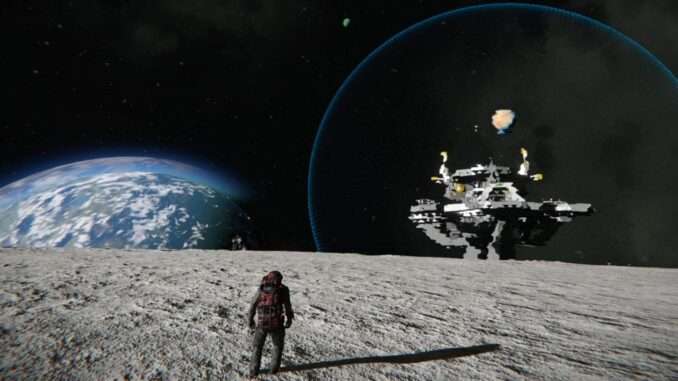
The purpose of this guide is to do my best to give a simple list of ship classes, roles, fleet composition, and some tactics.
Table of Contents
Simplified Ship Classes and Roles
Note: Credit goes to Tibrochief
To understand what your fleet should consist of, we must first examine the roles and capabilities of different ships.
Escorts and Small(er) Ships
Corvettes: A small, fast ship consisting of light armor and weapons. They are relatively cheap and are used most commonly as escorts. While well equipped to deal with pirates and other small threats, they are not going to fare well in intensive combat.
Frigates: Heavier than a corvette and sometimes slower than destroyers, frigates are the heavy hitters of escort vessels. Still somewhat cheap, they have more armaments than corvettes and have mildly better armor.
Both ships (frigates more-so due to superior space) may be equipped for specific duties, such as anti air/ point defense. Hence, there are many sub-classes to create and choose from.
Mildly Larger Ships
The following ships are slightly more resource intensive, but may be used as escorts.
Submarines (SS): Silent killers and the nightmare of large targets, a submarine class ship in space is interesting. Instead of ¨submerging¨, because you cant, submarines are suggested to have very dark colors and approach the target with thrusters turned off. Their torpedo (and in some cases, missile) surprise strikes can catch targets off guard. Their attacks should be able to cripple targets, if not destroy them. Be wary of destroyers and anything with radar.
Destroyers (DD): A swift, lightly armored ship equipped with enough firepower to decimate ships of equal or larger size. Capital ships must be very wary, as torpedoes are a common weapon and pack quite the punch. Captains of capital ships and stations should be wary of these silent threats and may need to use radar to detect them. Good sub hunter.
Light Cruisers (CL): A decently sized ship, the light cruiser has the capability of being an excellent utility ship. With firepower able to give smaller ships nightmares, the light cruiser makes for a good patrol and scout ship. Torpedoes are common on them, but sometimes is switched out for more guns or other systems.
Heavy Cruiser (CA): With much more armor and firepower than their light versions, these ships may be the same size, if not slightly larger. They are the brute force of medium sized ships, able to annihilate all previously discussed ships. In some cases, they have been able to take on battleships in direct combat. Torpedoes are uncommon on them, but they can be equipped. Most heavy cruiser captains prefer the larger amount of guns.
Capital Ships
These are the bread and butter of every fleet that can afford them, these ships are very expensive. The loss of one is a massive loss of life and resources, but are extremely powerful when used correctly.
Battleships (BB): Guns. They’re big, and have lots of them. The battleship is a massive warship, bristling with guns of different sizes. Most of its critical components are protected by so much armor, you may need armor piercing (AP) mods to damage them directly. Slow and unwieldy, these ships rely on secondary batteries for point defense against anything that comes too close for comfort. Although some battleship secondary batteries are devastating, it is better to travel with an escort. Everyone benefits!
Battlecruisers (BC): cruiser + battleship-sized guns = battlecruiser. Pretty much a designated sniper to provide support fire.
Carriers (CV): Capital ships of varying sizes, they can be converted from anything of proper sizes. Instead of guns, they use planes or drones to conduct attacks. Size of flight deck and interior affects airgroup sizes.
Light Carrier (CVL): Lightly armored and small, these ships can deliver a small airgroup to a location very quickly. They are good for planetary mobile defense groups or rapid response units.
Armored Carriers (CVA): Slower than other carriers, they can withstand direct combat. While heavier armor inhibits hangar size (and thus, airgroup size), they function as fleet support.
All carriers (though not recommended for CVLs) may sacrifice a SMALL portion of flight deck space for secondary guns. It is recommended for all carriers to have some for of point defense. Air superiority fighters may be used as a highly mobile point defense unit, capable in assisting in AA duties across an entire fleet.
Auxiliary Ships
Support ships that perform many specialized duties. If you encounter any of these ships, prioritize capture over destruction.
Repair ships: Lightly armored ships of various sizes with point defense. With many constructor ships and repair- oriented crew, they carry all parts needed for various levels of ship and station repair. They are used in recovery of hardware and ships.
Plane and submarine tenders: Mobile repair and replenishment ships for planes and subs respectively.
Fuel tanker: Carries oxygen, hydrogen, and power for resupplying ships of various sizes. Has point defense only.
Cargo ship: Carries cargo, and sometimes vehicles. Come in many variants (dropship, fighter carrier, vehicle carrier, etc.)
Fleet Composition
Strike Groups: Varying sizes, based on target. Usually consists of fast ships capable of hit and run.
Wolf Pack: Submarines OR destroyers only. Used for quick destruction of convoys or stray ships. Fast, stealthy, and destructive
Task Force: Well rounded fleets of various ship sizes and classes. Very hard to break, but mass destruction weapons may cripple or destroy the fleet.
Ways to counter:
- Chip away ships.
- Poke and prode with aircraft or long range weaponry.
- Minefields to slow down (and possibly deal damage if nobody pays attention).
- Release warheads in direction of fleet at high speeds.
Or you can send in a fleet of your own for movie worthy brawls.





Be the first to comment